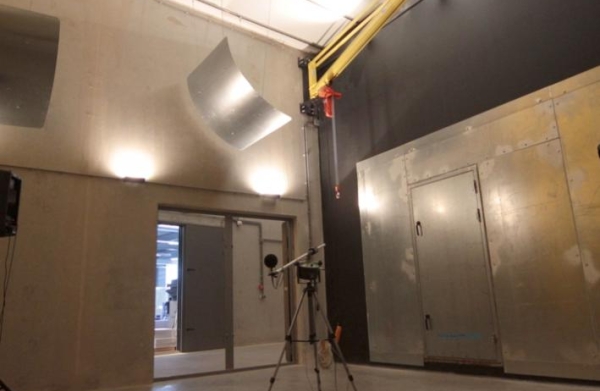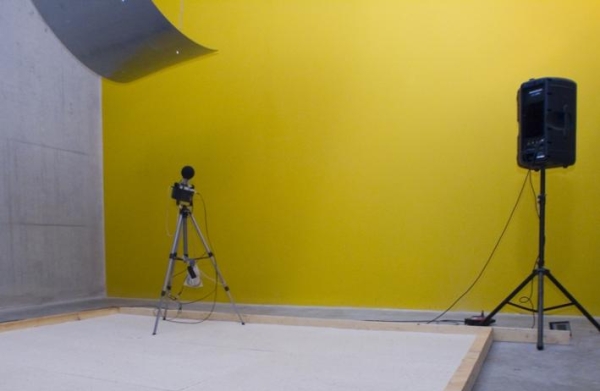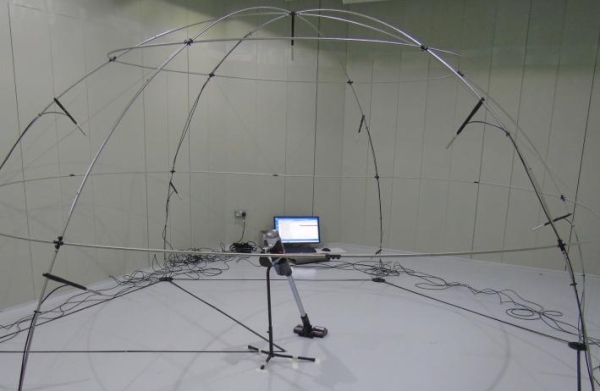BS EN ISO 10140:2010 – Laboratory measurement of sound insulation of building elements – resulting in a report with a single value of overall Sound Reduction Index (Rw) and presenting sound insulation values in 1/3rd octave bands from 50 Hz – 5 kHz.
Recommended test for acoustic panels, walls, doors, partitions, windows etc.
BS EN ISO 354:2003 – Measurement of sound absorption in a reverberation room – resulting in a report with a single value of weighted sound absorption coefficient and sound absorption coefficient values in 1/3rd octave bands from 50 Hz – 5 kHz.
Recommended test for acoustic panels, absorbers, wall or ceiling treatments etc.
BS EN ISO 3744:2010 – Determination of sound power levels and sound energy levels of noise sources using sound pressure – Engineering methods for an essentially free field over a reflecting plane – resulting in a report with a single value of sound power level Lw and sound power levels represented in 1/3rd octave bands between 50 Hz-10 kHz
Recommended test for household appliances, machines, devices etc.
BS EN ISO 9614:1996 – Determination of sound power levels of noise sources using sound intensity measurements by scanning – resulting in a report with a single value of sound power level Lw and sound power levels represented in 1/3rd octave bands between 50 Hz-10 kHz.
Recommended test for in-situ devices, machines and components etc.




